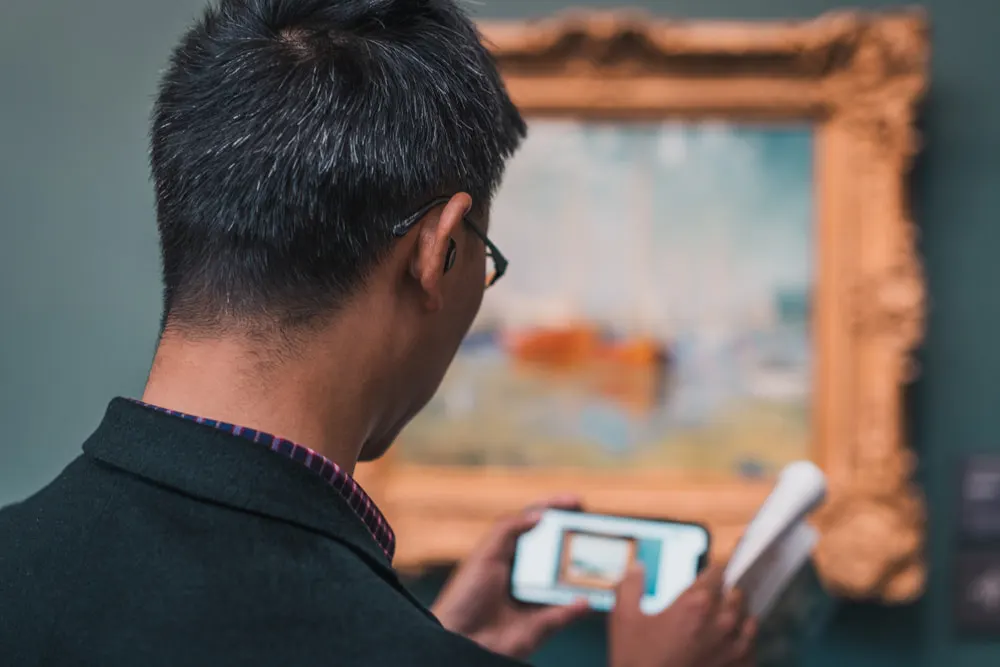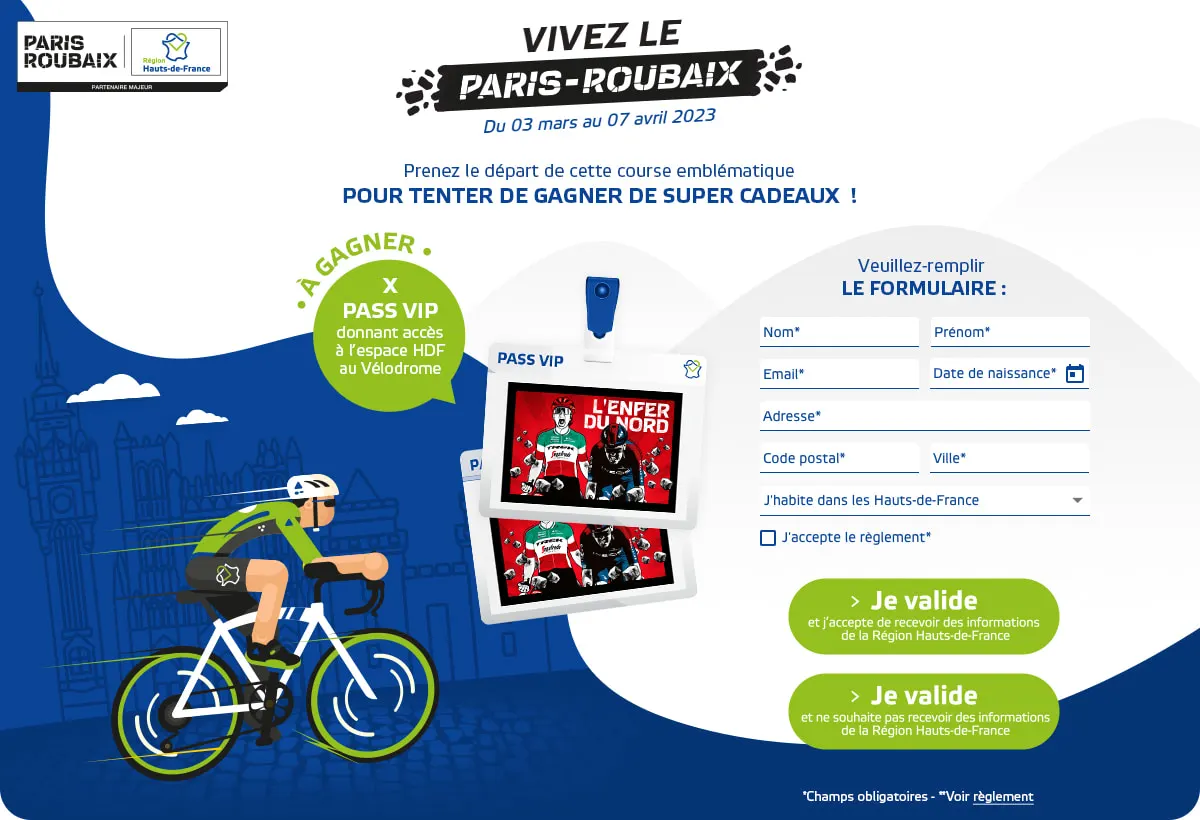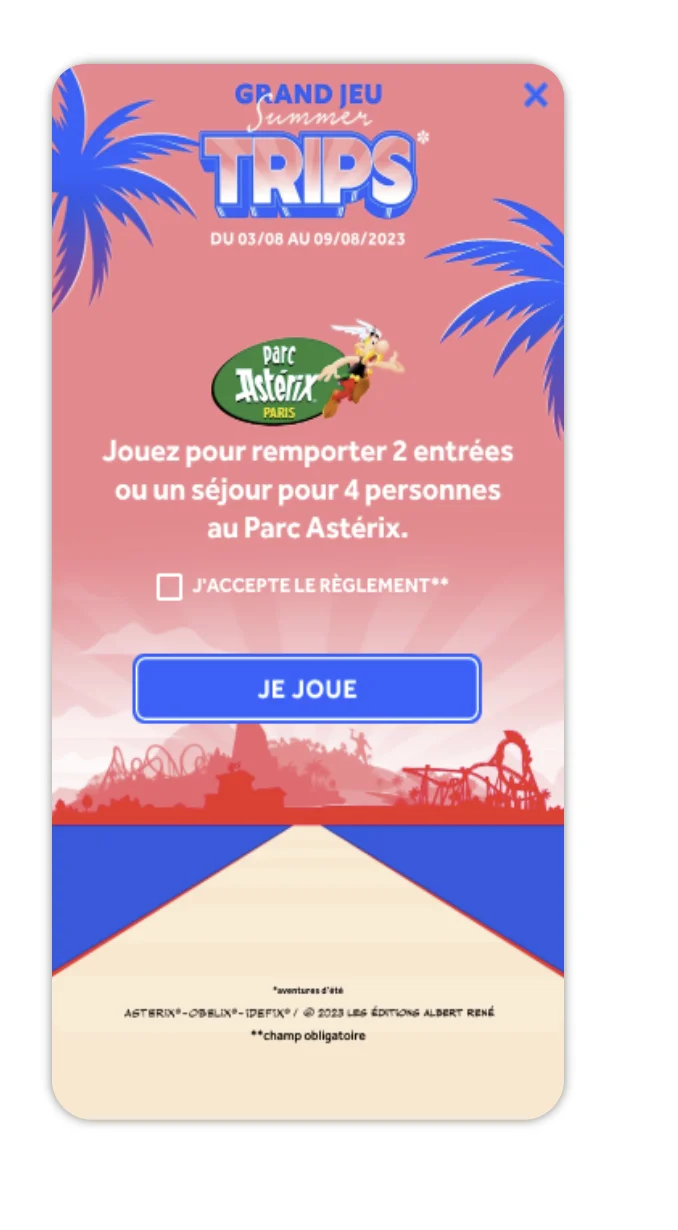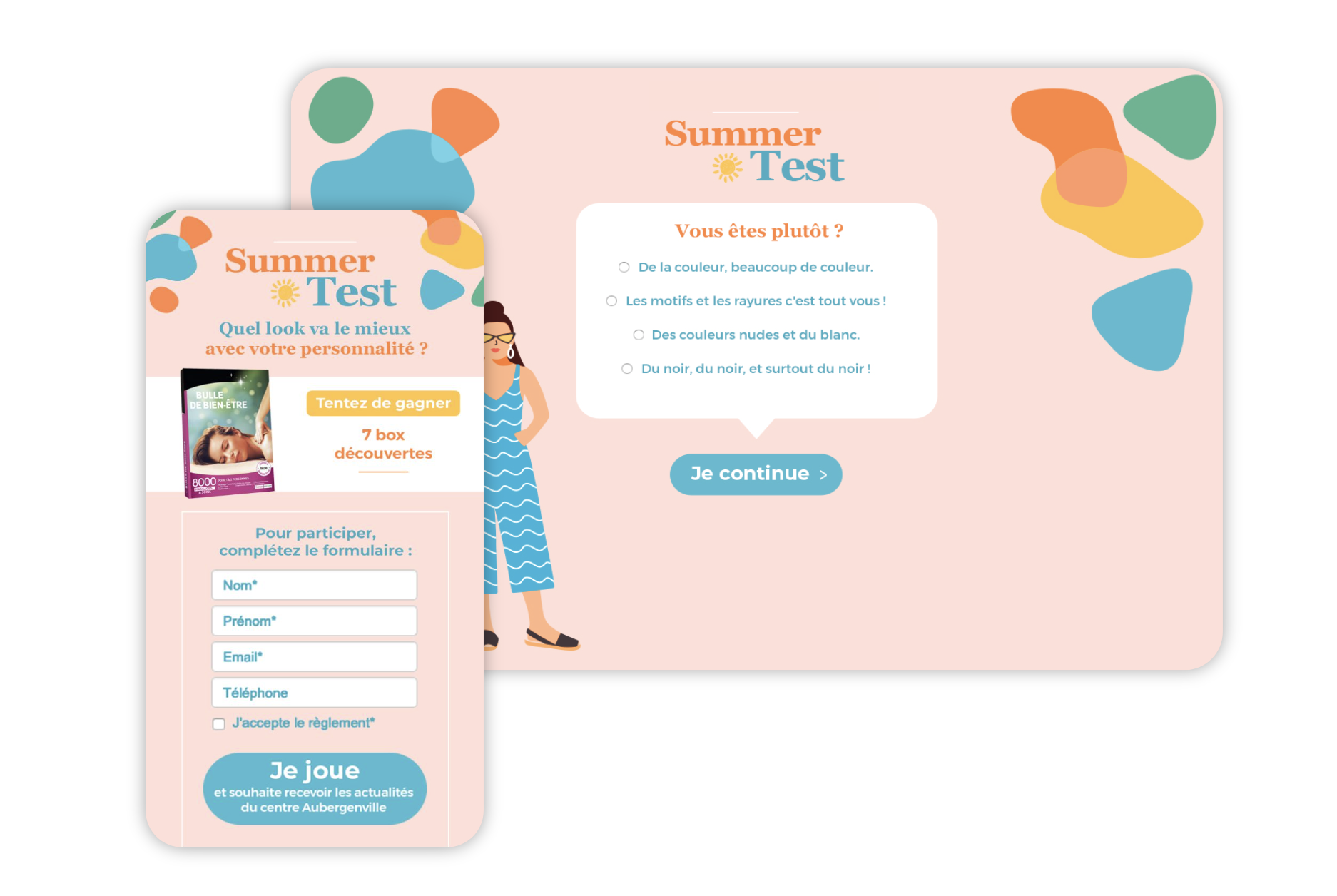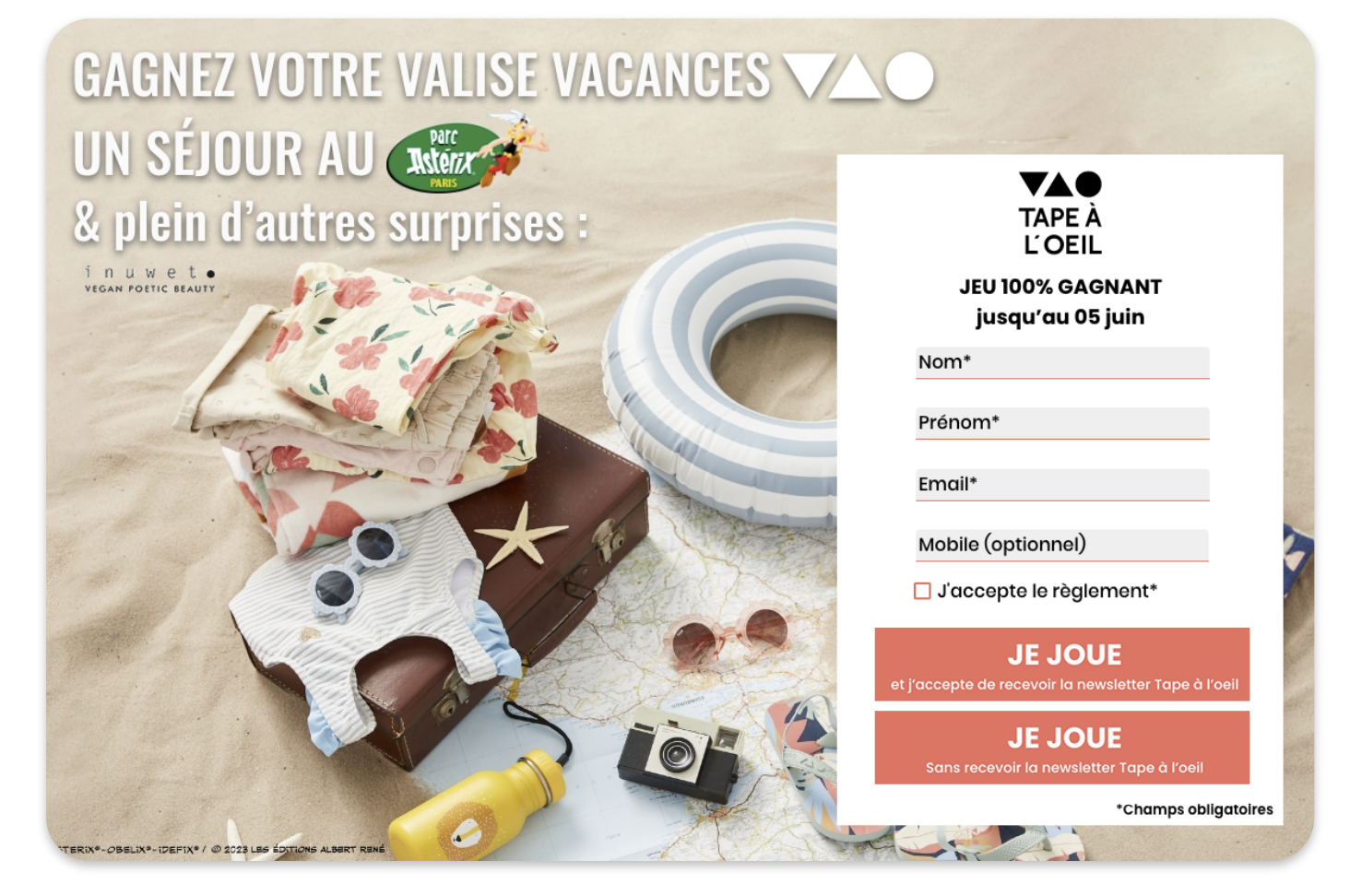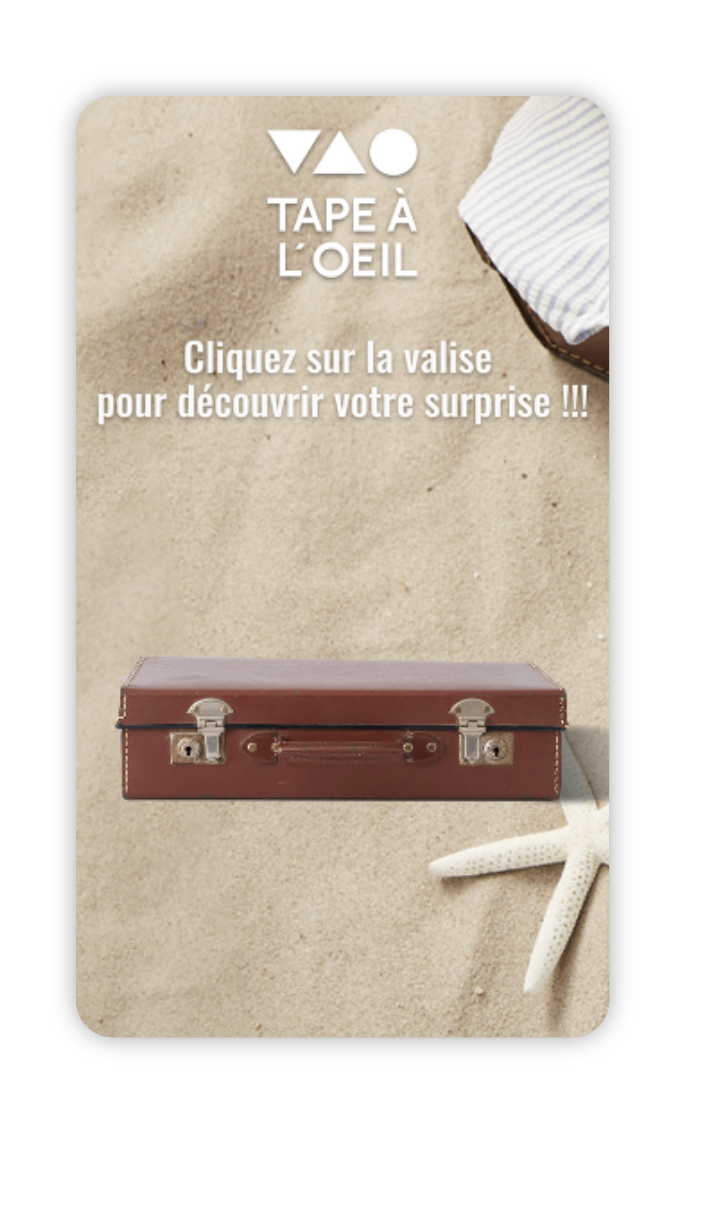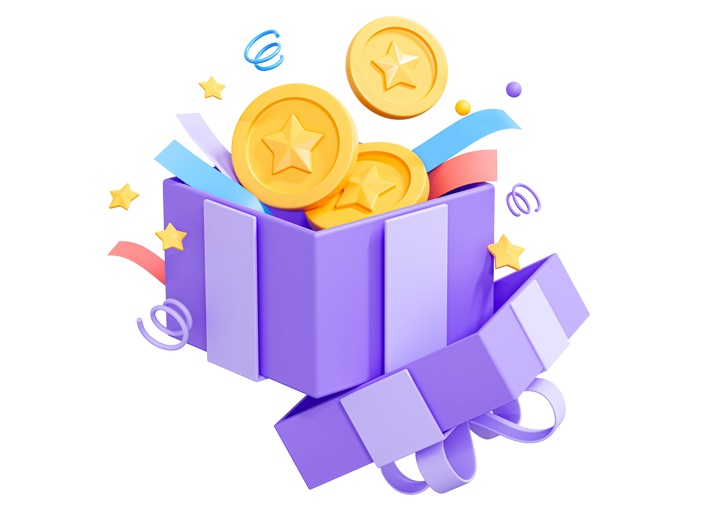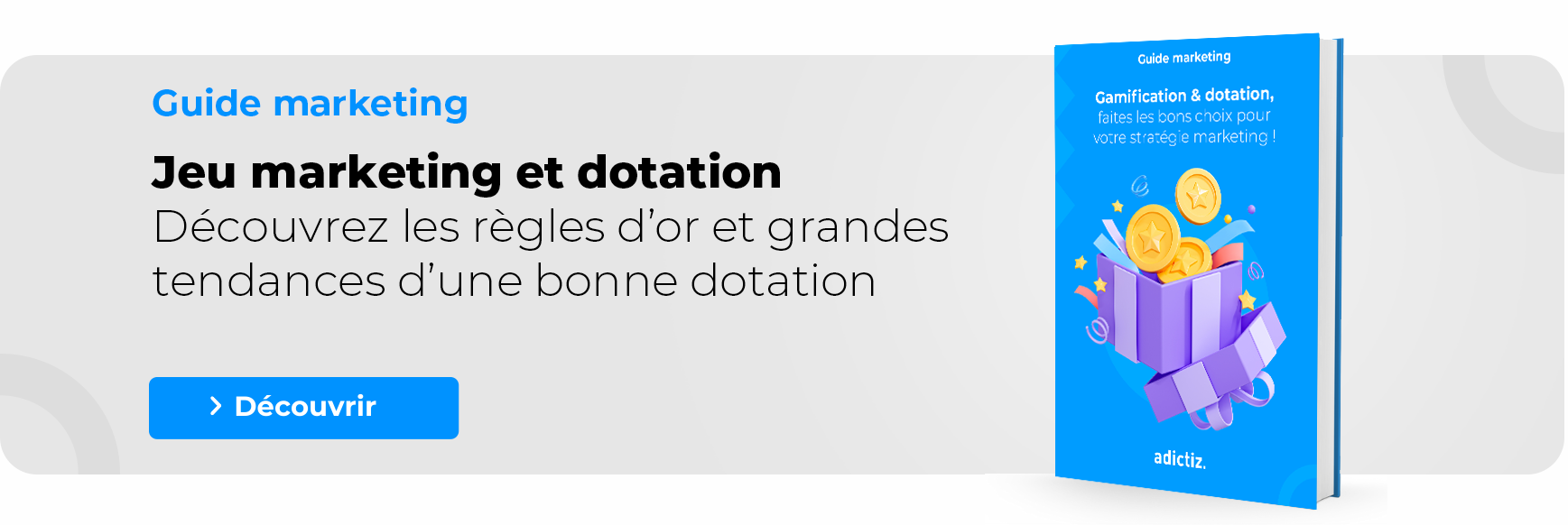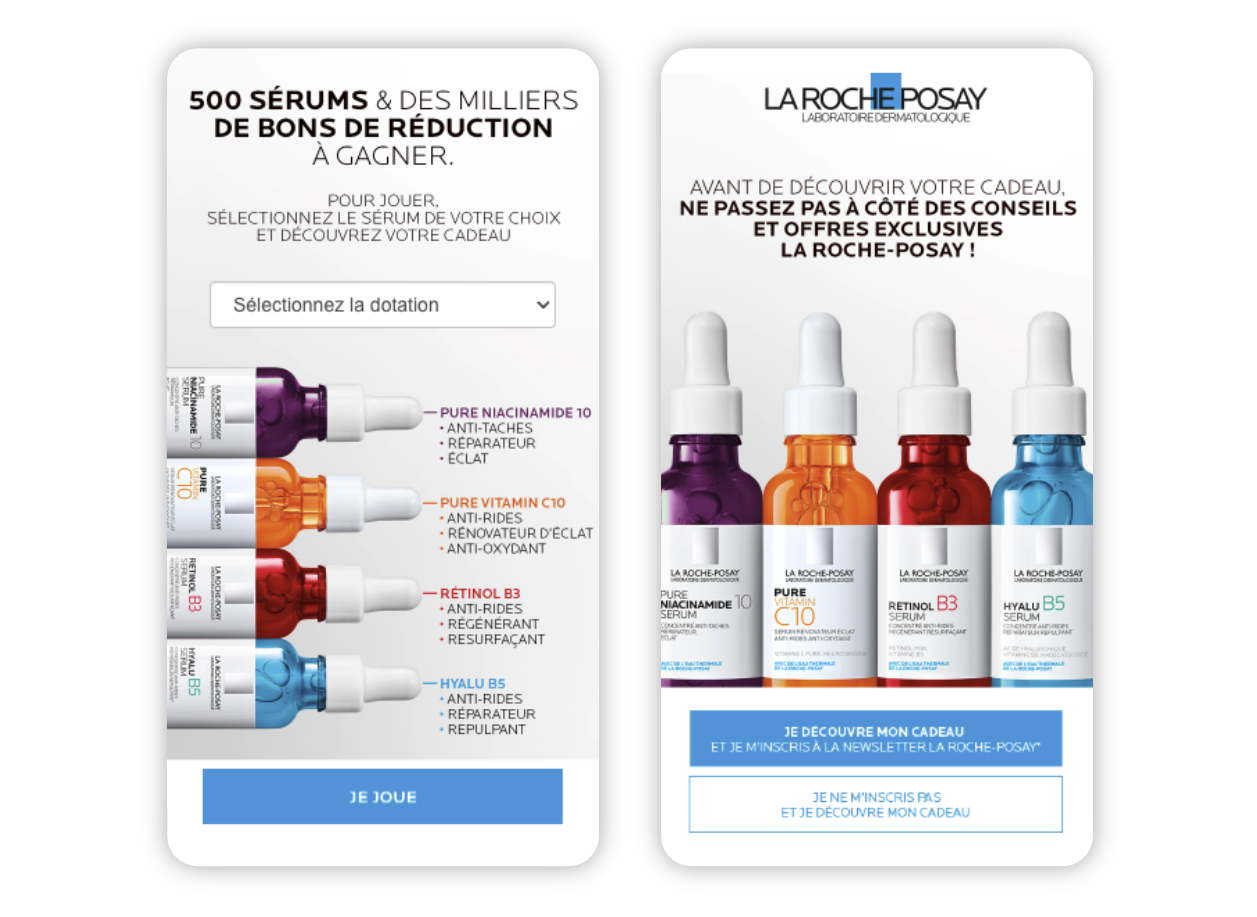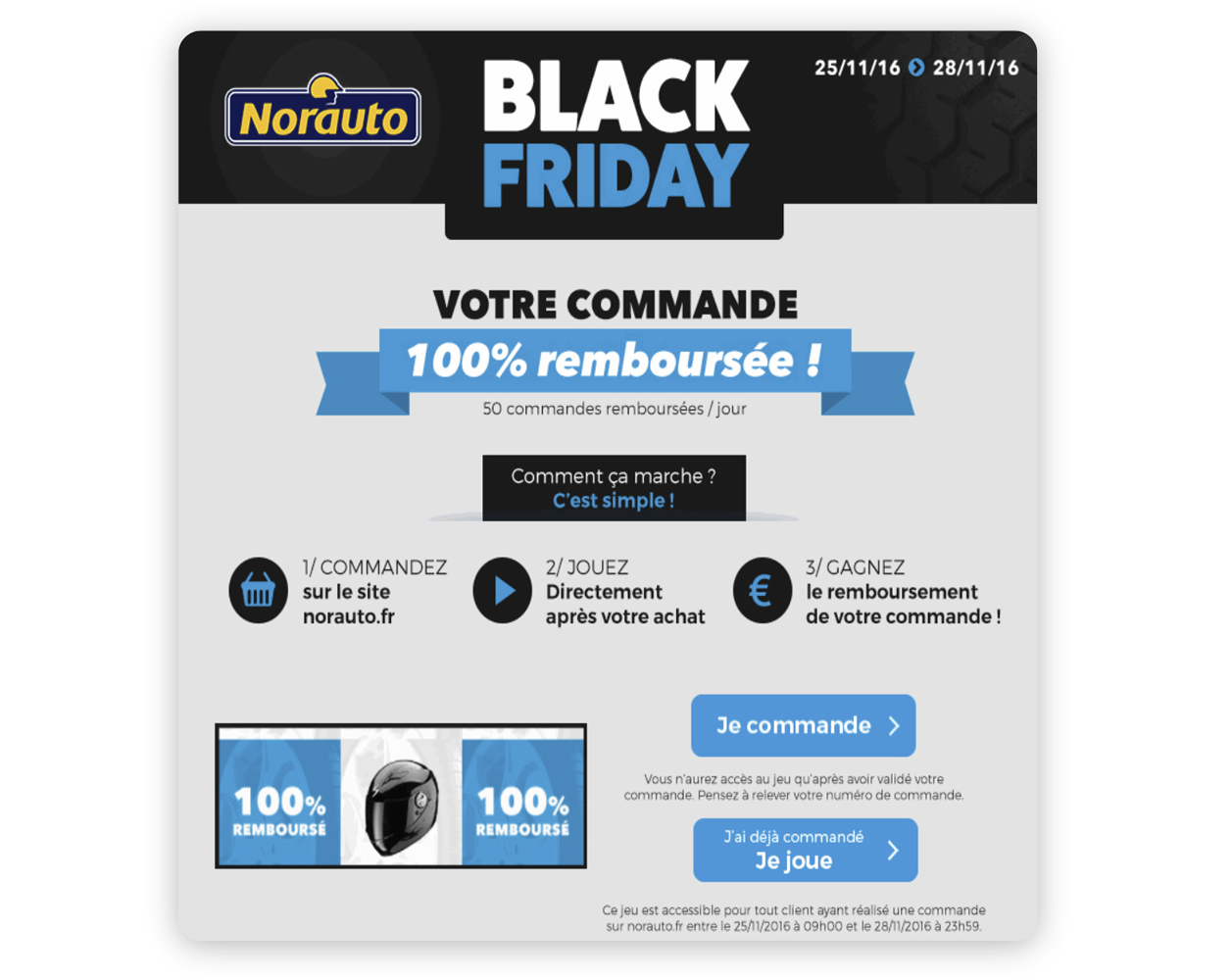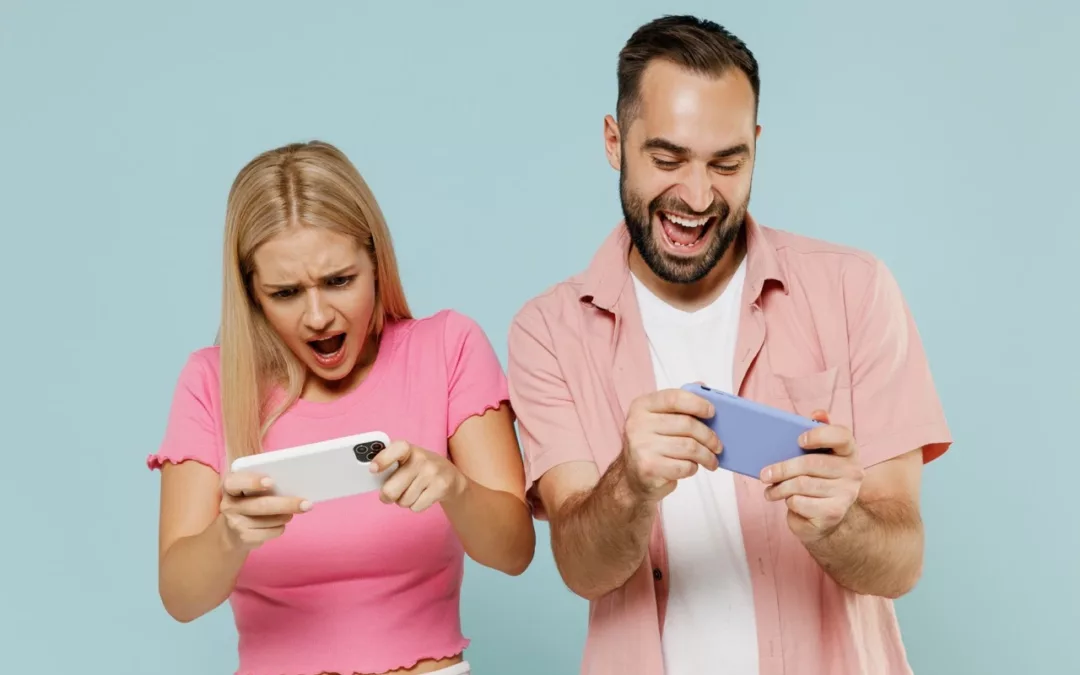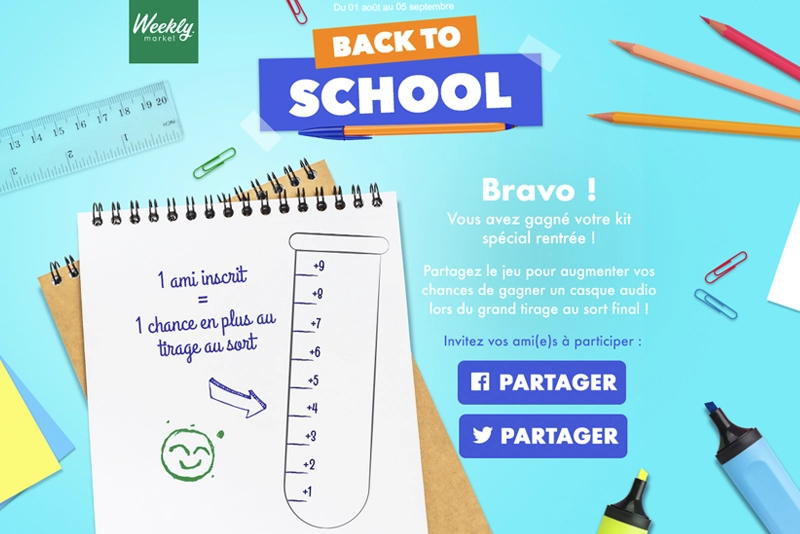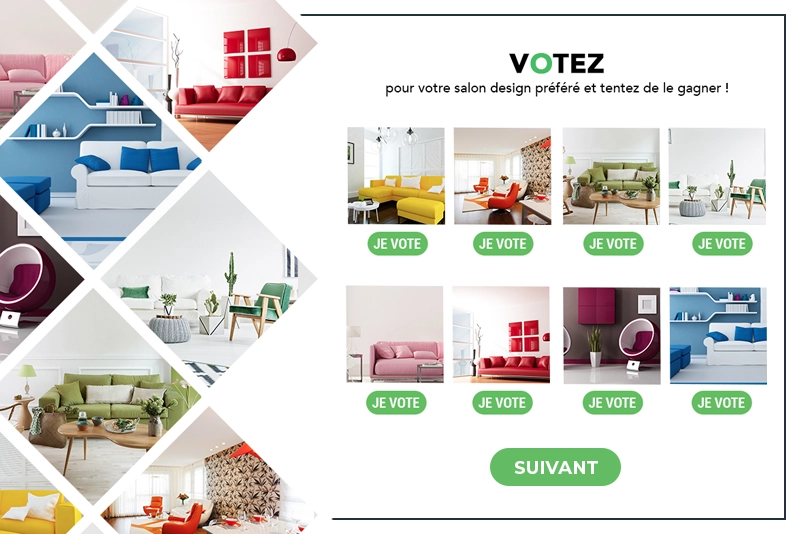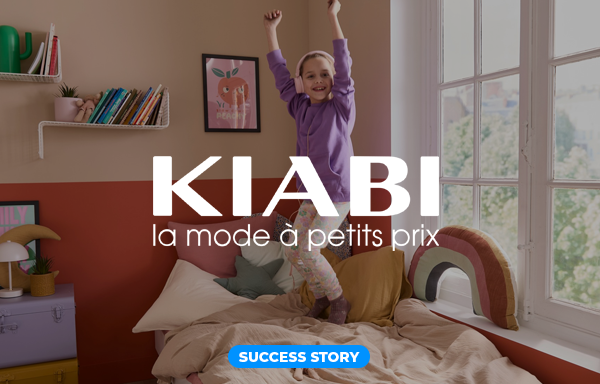
Kiabi builds its lead generation marketing strategy around gamification
In today’s dynamic fashion industry, Kiabi stands out for its accessible style and innovative marketing approach. The brand has implemented a strategy focused on gamification. And this via a partnership with Playable marketing solution Adictiz from 2014.
This alliance has enabled Kiabi to successfully navigate through various objectives throughout the year. We invite you to discover how Kiabi excels in achieving objectives such as lead generation, brand awareness, data collection and CRM enrichment through gamified campaigns.
Gamification at the heart of lead generation at Kiabi
Kiabi has chosen to deploy an innovative Playable marketing strategy. To meet its animation, engagement and data collection objectives. This 360° gamification strategy is built around the creation and distribution of interactive experiences.
By enabling targets to interact with content during brand highlights, Kiabi consolidates its presence and captivates its audience. This approach is not limited to capturing attention. It extends to lead generation. By encouraging sharing and virality, gamification enables Kiabi to attract leads that have an affinity with the brand, helping to establish meaningful relationships with prospects.
With the disappearance of third-party cookies, Kiabi has successfully met the challenge of <a href="https://www.adictiz.com/en/blog/why-collect-data/
” style=”color: #000000; text-decoration: underline;”>collecting first-party data in an ethical and transparent way. Thus providing its CRM with a qualitative and sustainable input for future activations.
We invite you to explore 3 operations launched by Kiabi. These demonstrate their mastery of playable marketing in the pursuit of their strategic objectives.
Lead generation: Kiabi’s high-performance campaigns
The impact of Kiabi Casting on lead generation
Since 2015, Kiabi has been offering an annual month-long casting operation. It takes the form of an engaging photo contest. This initiative offers its customers the chance to become the emblematic faces of upcoming collections. They are propelled to the rank of muses during an exclusive photo shoot. The aim is to highlight the value of customer loyalty. According to Kiabi, customers are more authentic and representative of the population’s diversity than traditional models.
The Casting 2024 campaign focuses on lead generation, encouraging customers to submit their photos to apply. It’s also an opportunity for participants to vote for their favorite candidates.
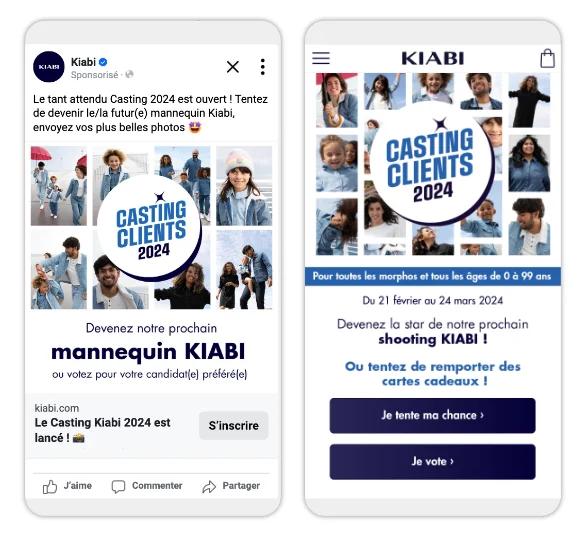
Adictiz Ads media campaigns amplified the effectiveness of the campaign. They targeted the most sought-after profiles, such as young professionals, families and seniors, on social networks.
The results are remarkable: 1.37 million registrants with an average opt-in rate of over 50% in a total of five countries.
This initiative demonstrates how Kiabi has successfully merged engagement, qualified lead generation and advertising effectiveness.
Kiabi highlights its Kiabi Community platform with a Swiper
Kiabi Community is a community platform created by Kiabi, focusing on mutual support between Size+ women. It has been extended to include parents. The aim was to understand and meet the needs of its customers.
By joining this community, members can exchange ideas, influence product design and preview products. Their opinions play an essential role in the development of the product range. This enables Kiabi to adapt to customer expectations.
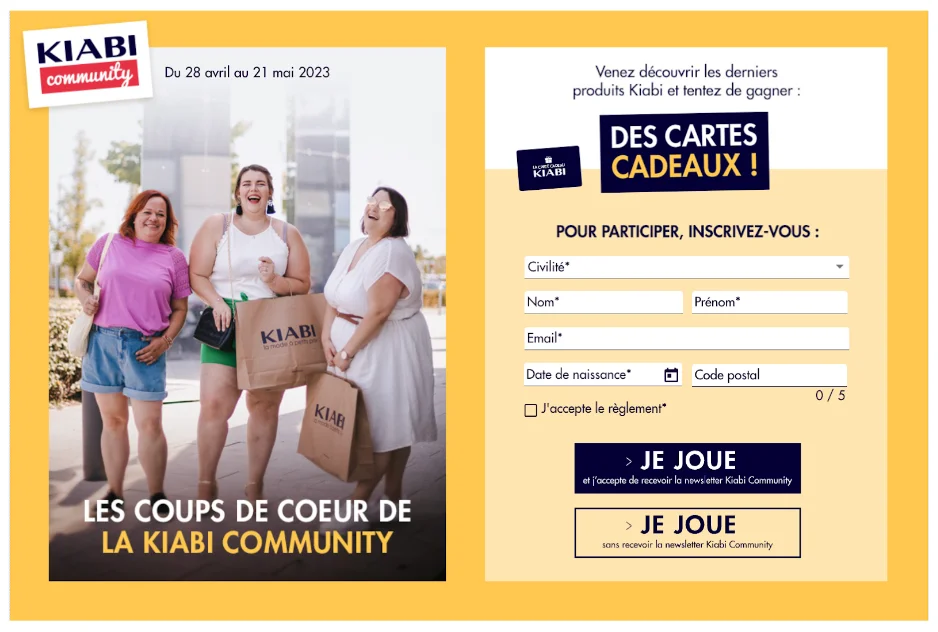
To promote the Kiabi Community platform, Kiabi has launched a campaign focused on concept promotion, lead generation and conversion.The Swiper mechanism was chosen to achieve these objectives.
Participants had to swipe to select their favorite looks. By entering the draw via the form, they had a chance to win Kiabi gift cards. At the end of the game, participants discovered which items had been highlighted.
The campaign raised awareness of Kiabi Community among a targeted audience. The results attest to its success, with over 14k registrations for the game, half of them via Adictiz Ads media coverage.
Kiabi qualifies its lead base
The life of a brand is built around the promotion of products or collections. With particular attention paid to the relationship with the products’ target audience. To promote its “Bienvenue Bébé” collection among young parents, Kiabi chose to interact with them through a highly attractive game: “Flip & Win”.
This experience was based on the principle of instant win. There were prizes such as baby care products to be won.
This initiative offered the brand an opportunity to get noticed and generate new leads, and to enrich its database by collecting information such as babies’ first names and ages. Thanks to this operation, Kiabi was able to help young parents prepare for the arrival of their baby, thus strengthening their loyalty to the brand.


Kiabi was able to recruit over 170,000 users to its operation, including 20% of subscribers from Adictiz Ads media campaigns. This strategy, combining lead generation and data enrichment, enabled Kiabi to qualify its audience for more targeted communications. Reinforcing its position as a brand focused on engagement and customer satisfaction.
Conclusion
Kiabi stands out in the fashion industry by adopting an innovative gamification-based marketing strategy, in partnership with playable marketing platform Adictiz. This approach has enabled the brand to navigate through a variety of marketing objectives, highlighting its expertise in lead generation, awareness building and data collection.


